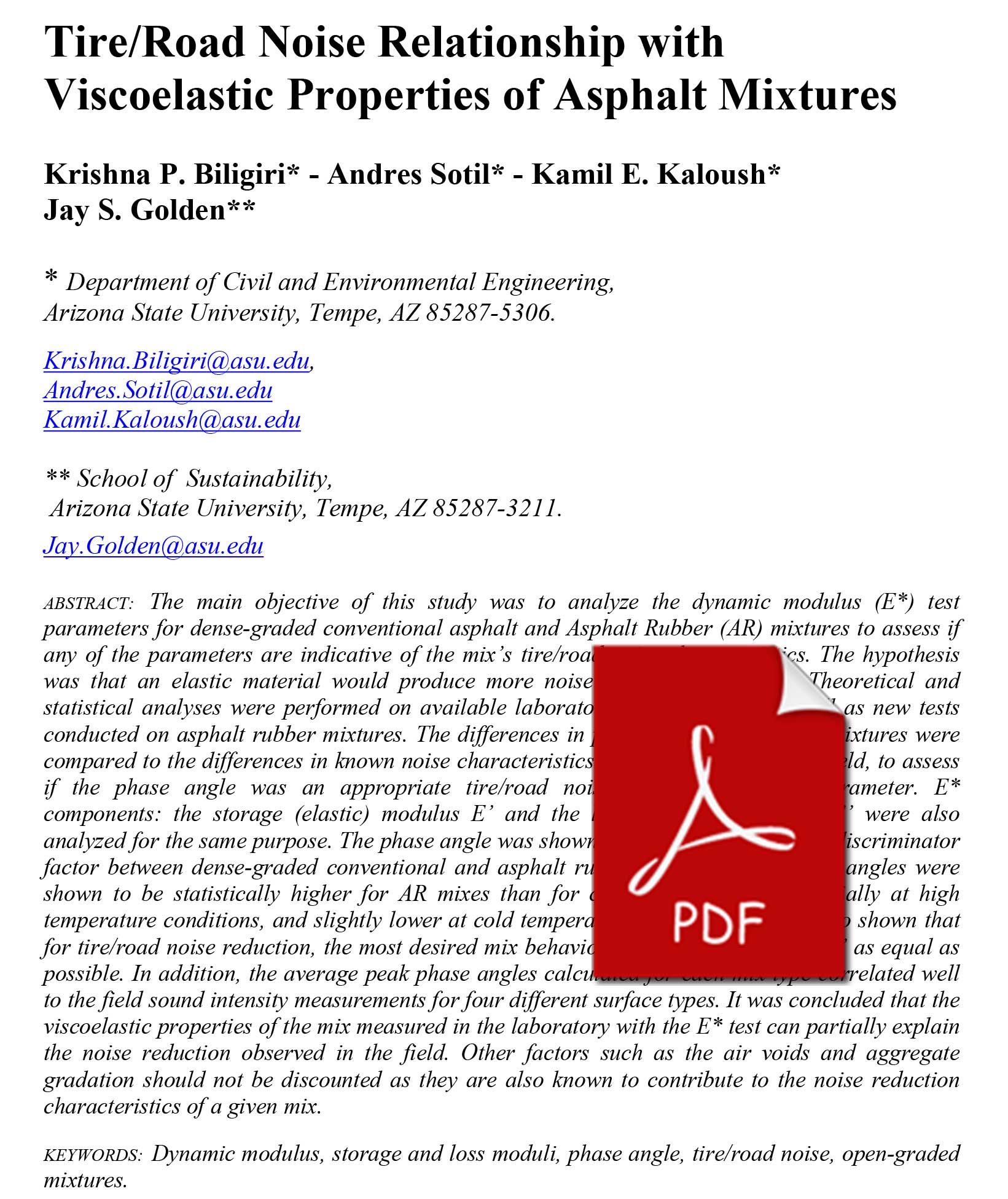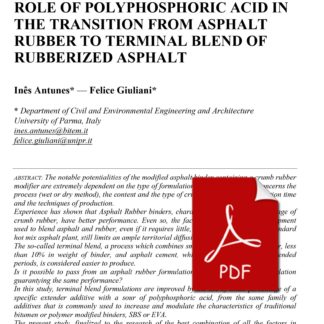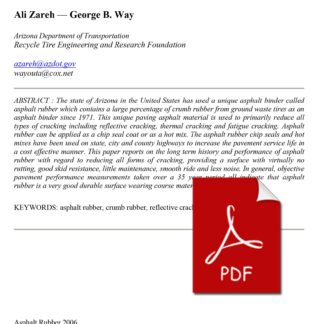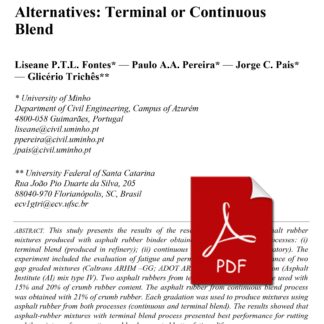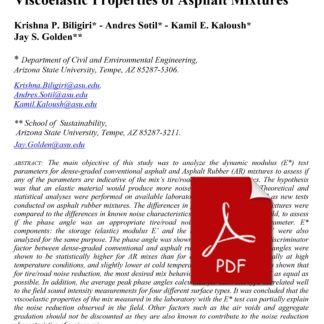Description
The main objective of this study was to analyze the dynamic modulus (E*) test parameters for dense-graded conventional asphalt and Asphalt Rubber (AR) mixtures to assess if any of the parameters are indicative of the mix’s tire/road noise characteristics. The hypothesis was that an elastic material would produce more noise than a viscous one. Theoretical and statistical analyses were performed on available laboratory E* test results as well as new tests
conducted on asphalt rubber mixtures. The differences in phase angles among the mixtures were compared to the differences in known noise characteristics of the pavements in the field, to assess if the phase angle was an appropriate tire/road noise field performance parameter. E* components: the storage (elastic) modulus E’ and the loss (viscous) modulus E’’ were also analyzed for the same purpose. The phase angle was shown to potentially be a noise discriminator factor between dense-graded conventional and asphalt rubber mixtures. The phase angles were
shown to be statistically higher for AR mixes than for conventional mixes, especially at high temperature conditions, and slightly lower at cold temperature conditions. It was also shown that for tire/road noise reduction, the most desired mix behavior is to have the E’ and E’’ as equal as possible. In addition, the average peak phase angles calculated for each mix type correlated well to the field sound intensity measurements for four different surface types. It was concluded that the viscoelastic properties of the mix measured in the laboratory with the E* test can partially explain the noise reduction observed in the field. Other factors such as the air voids and aggregate gradation should not be discounted as they are also known to contribute to the noise reduction characteristics of a given mix.

